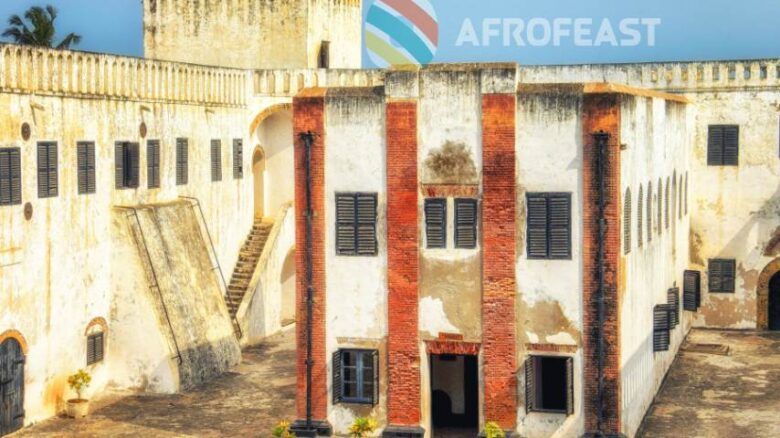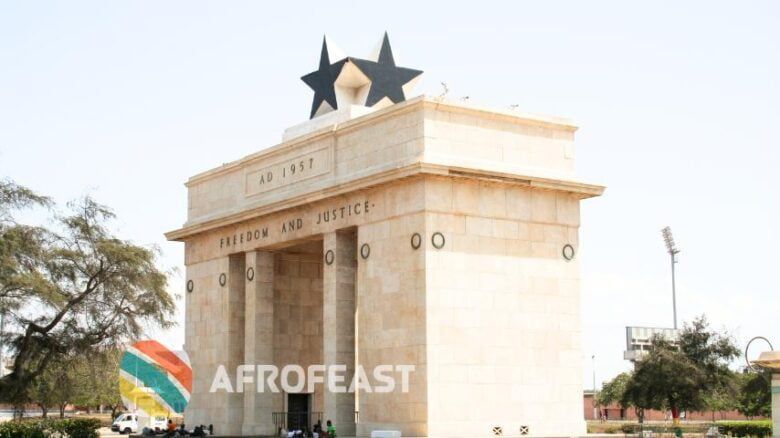Top Historical Sites in Ghana
Ghana has an exciting history and historical sites that all visitors will find interesting. Powerful kingdoms such as Ashanti and Bonoman were the first to set up shop, leaving behind amazing art and buildings. Then colonial times rolled in, bringing both hardship and strength. However, in 1957, Ghana finally gained independence.
The best part is that we can still experience this history firsthand! Ghana’s historical sites are like time machines. From forts that murmur secrets of the past to old mosques that stand guard silently, these places are more than just walls. They’re gateways to a different time.
We may walk in the shoes of Ghana’s forebearers, experience their hardships and triumphs, and get a thorough grasp of this amazing country’s past by travelling to these historical sites.
These sites serve as monuments as well as windows into the successes and setbacks that moulded the country into what it is now. Let’s look at them.
1. Ghana’s Rich Heritage
Ghana’s history is far more nuanced than the slave trade. Ghana’s early adoption of Islam is demonstrated by the Larabanga Mosque, the oldest in West Africa. Its elaborate prayer niche, built from wood and mud in the fourteenth century, and its distinctive architectural style makes it a must-see for any visitor interested in religious history.
The Larabanga Mosque is located at 34 Sawla-Damongo Rd, Larabanga, Ghana.
2. The Forts and Castles

Rugged forts and castles dot Ghana’s coastline, serving as unsettling memories of the transatlantic slave trade. A poignant example of this dismal historical era is Elmina Castle, a UNESCO World Heritage Site.
Built by the Portuguese in the fourteenth century, the dungeons inside were notable for their dense walls and small apertures, which allowed them to house many prisoners. This is a terrifying but necessary place to take a guided tour, providing insight into the trade’s human cost.
Moreover, Cape Shore Castle is another UNESCO monument that paints a more comprehensive picture further down the shore.
The “Door of No Return,” the last location where Africans who were sold into slavery could go, and the moving “Male and Female Slave Dungeons,” tiny, airless spaces where people were packed together before being shipped, are also open for exploration by guests.
3. Historical Gems of Accra
Accra, Ghana’s capital, is like a big history museum! They got a super cool park for their first president, Nkrumah, who led the country to independence. You can even see his tomb and a neat museum dedicated to him and Ghana’s fight for freedom. They also have a famous Black Star Square, also called the Independence Square, where everyone partied when Ghana became independent.
The West African country proclaimed independence in 1957 at the commanding Black Star Square, topped by the stunning Independence Arch. This brilliant display of Ghanaian military history occurs at the changing of the guard ceremony.
4. Museums and Cultural Sites in Ghana
More details on Ghana’s history and culture can be found in its museums. Amazing world treasures can be found at the National Museum of Ghana in Accra, including Asante gold weights and ancient tools.

There is no subject I loved like history, more especially African history. Back in the mid-90s I used to live in the hilly and beautiful suburb of Rubaga along Stensera Road. Just across the road from my house, a few hundred metres from Rubaga Cathedral, was the late Dr Paul Ssemwogerere’s house.
Inside my house was a private library of a Duquesne University graduate that was well-stocked with psychology, African religion, philosophy and black history books. If not jogging up the hill to Rubaga Cathedral, then downwards to Pope Paul Memorial Community Centre, next to Kabaka’s Lake, and back home, I would be hiding in the private library reading.
Two books caught my attention, one by Professor John Mbiti, and another, quite an intimidating volume that probably weighed a kilo, by Professor W.E.B Du Bois.
Ghana, a leading Pan African nation and home to many returnees, has dedicated a Centre for the late Dr Du Bois most African-Americans and black diasporans will enjoy visiting. The W.E.B. Du Bois Centre in Cape Coast, examines the life and writings of the well-known Pan-African activist and philosopher. Dr Du Bois, with all due respect, deserves the recognition he has been accorded, for he dedicated a substantial part of his life documenting slavery, oppression and black history.
6. Ghanaian Traditional Architecture and Sites
Deviating from the typical path can lead to historical locations that attest to the rich practices of Ghanaian communities. The conspicuous murals and beautifully designed timber panels in the traditional seat of the Asantehene in Kumasi, the Manhyia Palace, attest to the uniqueness of Ghana’s traditional architecture and glorious past.
Even though the Ashanti Kingdom is not usually accessible to the public, its intimidating presence serves as a powerful signal of its might and importance.
7. Ancient Kingdoms In Northern Ghana
One encounters a different kind of history when travelling north. UNESCO has designated the remarkable Gambaga mud-brick walls as a World Heritage Site. These walls served as the capital of the old Gonja Kingdom. Examining these remains offers a window into historical social mores and political structures.
8. Festivals and Cultural Events
Ghana’s past isn’t just found in historical sites and museums. It is brought to life by colourful festivals and year-round cultural activities. The Ga people of Accra celebrate the end of the hunger season with drumming, dancing, and group feasting at the Homowo festival. The Eastern Region’s annual Asafotufiam celebration honours the valour of warriors with colourful displays of traditional regalia and mock battles.
Conclusion
Discovering Ghana’s historical places is a voyage into the heart of the country, not merely a place to take tourists. Ghana’s history is revealed in every worn stone and colourful festival, from the depressing legacy of the slave trade to the victorious fight for independence and the enduring power of local traditions.
Top 7 Art Galleries in Ghana: Celebrating the Artistic Spirit
